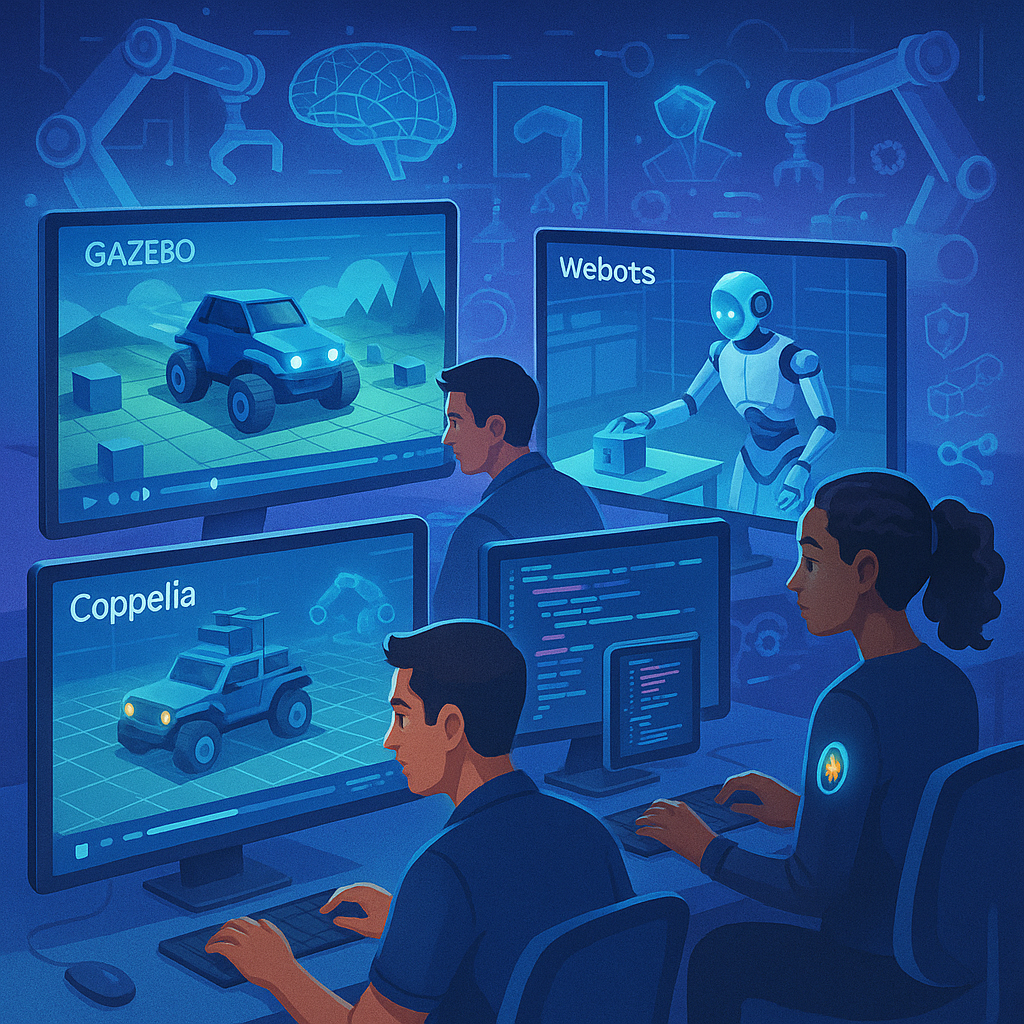Building and evaluating robots in real-world scenarios can cost a lot, take a long time, and sometimes put people at risk. This explains why many engineers and scientists opt to use robot simulators. These programs help create digital environments where you can check how your robot behaves — well before you build it. Let’s examine some well-known simulators like Gazebo, Webots, and other choices.
🧠 What Does a Robotics Simulator Do?
A robotics simulator is a software program that builds a virtual world where you can:
- Create and evaluate robots
- Run tests without breaking actual hardware
- Change robot settings and observe how they perform in various situations
In a nutshell, it helps you identify and correct problems — cutting down on time and expenses.
🚀 Gazebo: A Strong Option for Developers
Gazebo stands out as one of the most used simulators in robotics. Here’s why:
- 🏗️ It builds lifelike 3D settings to test robots.
- 🔧 It integrates with ROS (Robot Operating System), a common tool for robotics teams.
- 💡 It delivers precise outcomes thanks to its robust physics engine.
- 🌍 It boasts a large community making it easy to get help and find resources to learn.
If you’re developing advanced robots and need thorough simulations, Gazebo proves a wise choice.
🌟 Webots: A Great Tool for Beginners and Experts
Webots stands out as a popular simulator gaining fans for its user-friendly features:
- 🖱️ It lets you build your virtual world with a simple drag-and-drop interface.
- ⚡ It provides pre-made robot models to help you start testing .
- 👩💻 You can code in languages such as Python C++, or Java.
- 🕹️ It backs various sensors and motors that act like their real-world counterparts.
Webots ranks high among students, researchers, and anyone looking to create prototypes .
⚙️ Other Alternatives You Can Explore
Apart from Gazebo and Webots, you might find these other simulators useful:
- CoppeliaSim (V-REP) — A versatile tool that allows you to create personalized simulations.
- NVIDIA Isaac Sim — Perfect for AI-powered robots and recognized for its lifelike graphics.
- Unity with ROS connector — Excellent if you’re after game-quality visuals and hands-on robot testing.
Each tool has its own strong points based on your project needs.
✅ Why Use Simulators in Robotics?
Simulators offer many advantages:
- 💰 They help you cut costs by skipping early hardware tests.
- ⏱️ You can run hundreds of tests in no time.
- ⚠️ They boost safety letting you try risky moves in a virtual world first.
- 🔬 They let you tweak designs before buying real parts.
In short — simulators speed up robot development, make it safer, and smarter.
🔮 What’s Coming for Robotics Simulators?
As tech keeps growing, simulators will look more real. With AI digital twins, and cloud platforms, teams across the globe will soon have the ability to work together on robot tests in shared virtual worlds.
